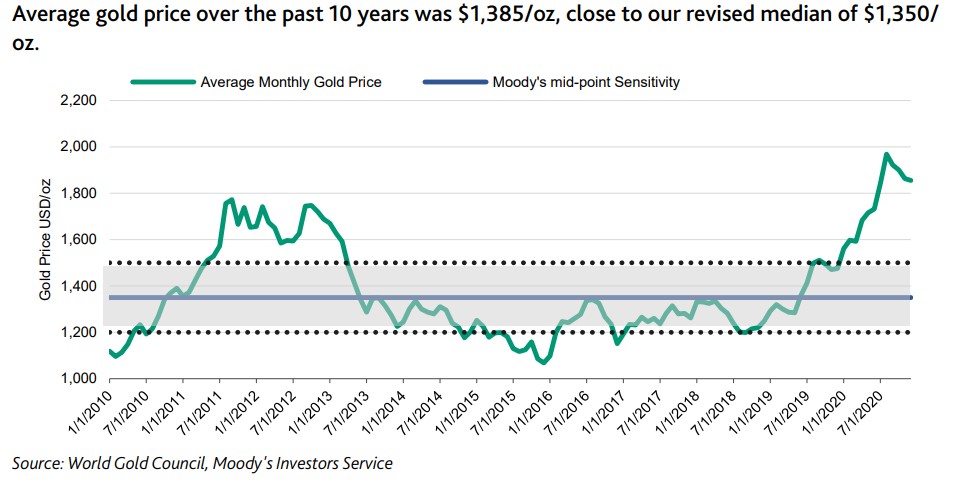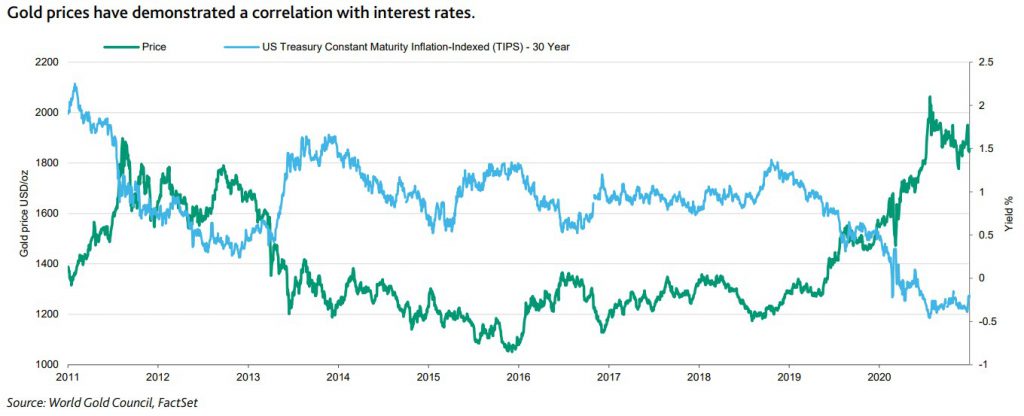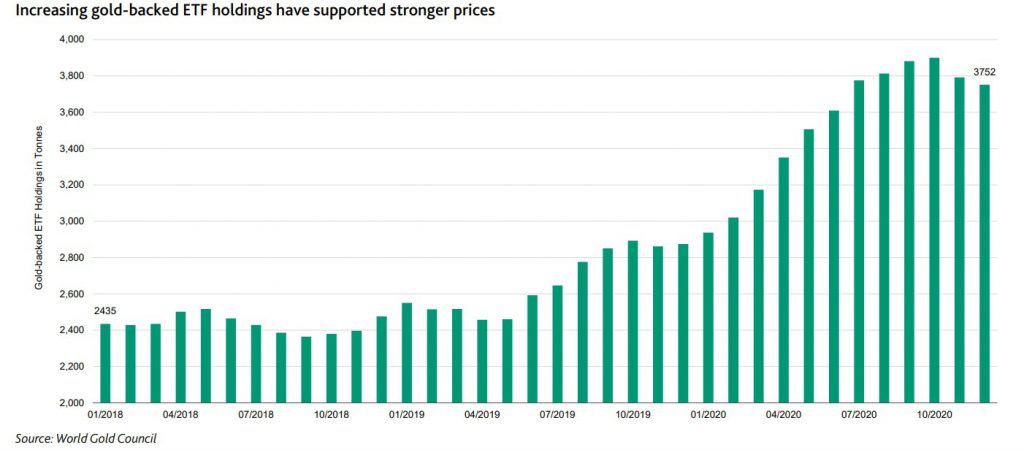In an earlier report, Moody’s Investor Service raised its so-called price sensitivity range for gold, which the debt ratings agency uses to evaluate credit quality and risk for producers over the next several years.
The new price sensitivity range is pegged at $1,200 to $1,500 per ounce, which represents an 8% increase at the midpoint from the $1,100-1,400 per ounce figure set in February 2020.

This revision was based on factors including lower-for-longer interest rates, expectation of a global economic recovery that will be uneven by country, region and sector, as well as continued political and geopolitical tensions that add to economic uncertainty.
“The revised range incorporates our view that gold does not have the same supply/demand fundamentals as other metals and is largely seen as a safe haven or store of value, fluctuating in response to global macroeconomic factors,” says Moody’s, adding that market sentiment and speculative positioning will keep gold prices volatile as a result.
“Current spot gold prices are above $1,800 per ounce, and we expect prices will remain at or above the top end of our new range through the first half of 2021.”
Lower rates
Supporting the increase to the gold price range is the view that real interest rates across maturities are expected to remain low over the next several years.
Moody’s believes central banks will continue to support market liquidity and financial conditions well into 2021. The banks have already communicated that they will likely keep interest rates low through the next two years and until economic growth recovers, unemployment rates decline and inflation anchors at the target.
Given that the economic recovery will still be incomplete in 2021, and given the persistent long-term disinflationary pressures from technological innovation, the risks of disinflation will be higher in 2021 relative to the risks of inflation overshoot.
This will provide space for interest rates to remain low across both advanced and emerging economies.

Other factors
Also supporting the increase to the gold price range is the view that geopolitical tensions will challenge the functioning of multilateral institutions and reduce their effectiveness in managing crises.
As the pandemic accelerates the decoupling of the US and Chinese economies with regard to trade, supply chains, technology and investment, disputes over these factors as well as foreign policy will likely continue.
Gold’s price performance also shows continued physical investment demand in the form of gold ETFs or bar and coins, as well as continued buying by central banks. Gold-backed ETF holdings grew by more than 50% from the beginning of 2018 to the end of 2020, demonstrating continued price support.





